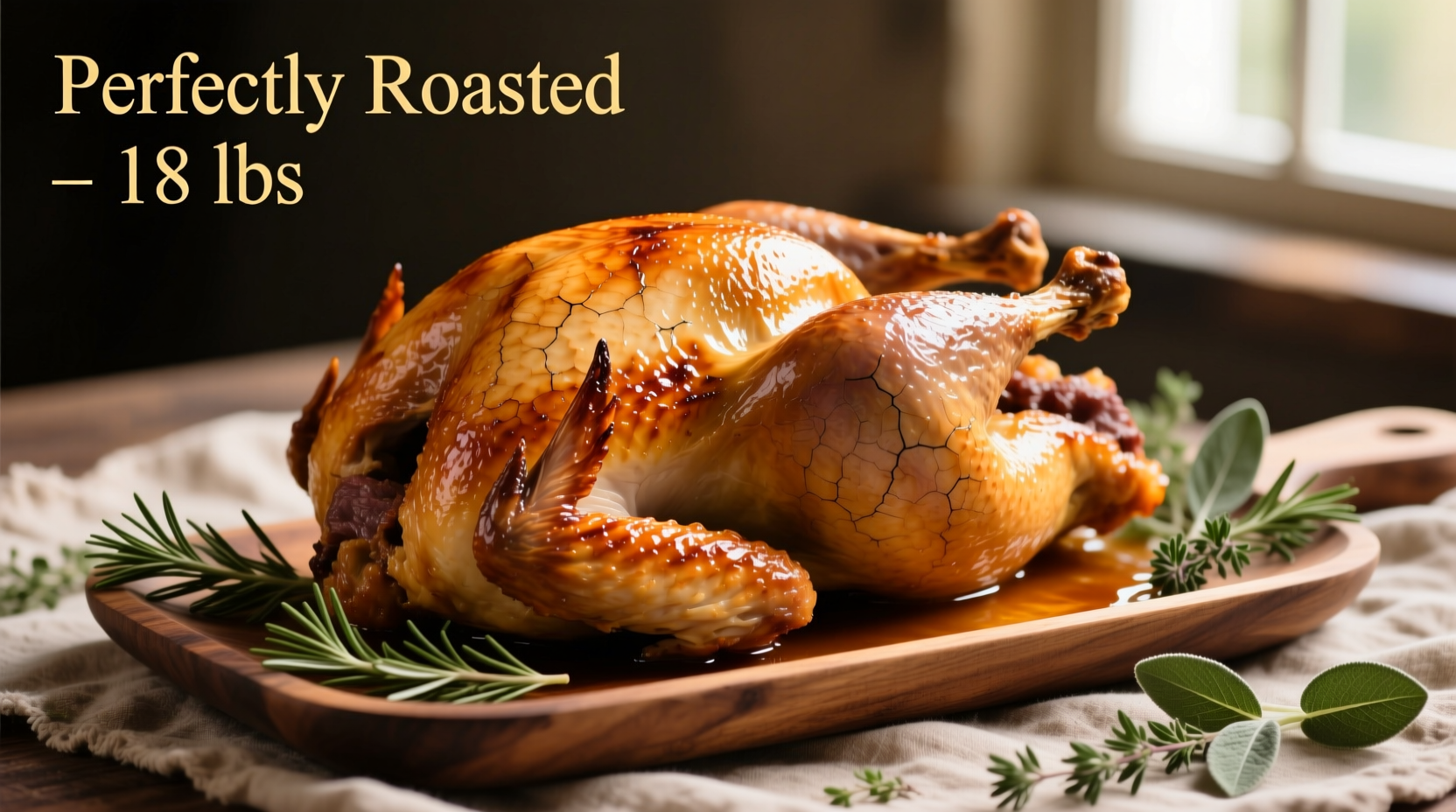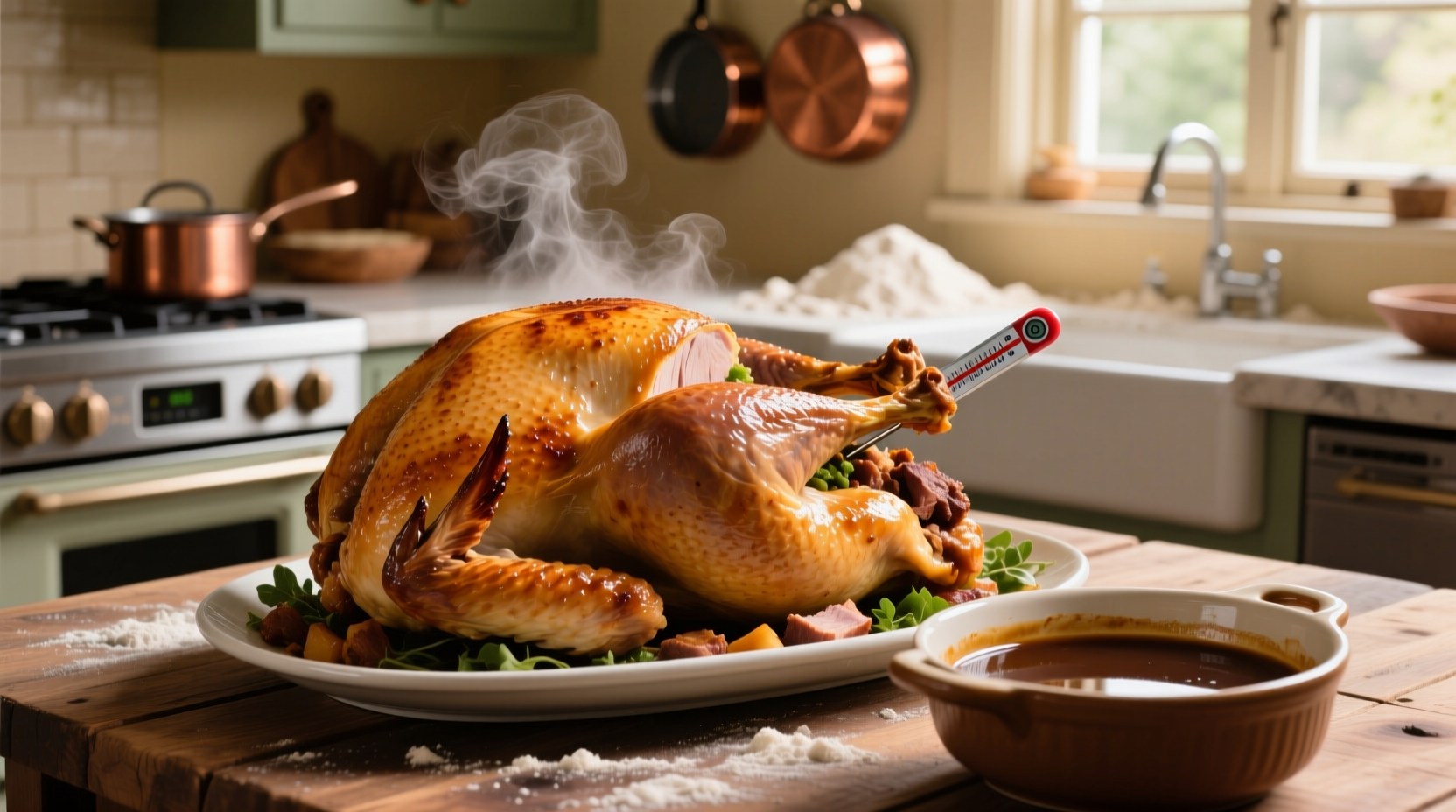Perfect Timing for Your Holiday Centerpiece
Nothing ruins a holiday gathering faster than an undercooked or dried-out turkey. Getting the timing right for your 18-pound bird isn't just about following a clock—it's about understanding heat transfer, turkey composition, and food safety principles that ensure your centerpiece turns out juicy and safe to eat. This guide delivers precise timing based on USDA standards, plus professional techniques that account for variables like oven accuracy and turkey preparation.
Quick Reference: 18-Pound Turkey Cooking Timeline
| Cooking Method | Unstuffed Time | Stuffed Time | Internal Temp |
|---|---|---|---|
| Conventional Oven (325°F) | 3h 45m - 4h 15m | 4h 15m - 4h 45m | 165°F |
| Convection Oven (300°F) | 3h - 3h 30m | 3h 30m - 4h | 165°F |
| Grill (Indirect Heat) | 3h 30m - 4h | 4h - 4h 30m | 165°F |
Why Precise Timing Matters for Food Safety
The USDA Food Safety and Inspection Service emphasizes that poultry must reach 165°F internally to eliminate harmful bacteria like salmonella and campylobacter. An 18-pound turkey spends significant time in the "danger zone" (40°F-140°F) where bacteria multiply rapidly. Proper timing ensures your turkey passes through this zone efficiently while achieving perfect texture.
According to the USDA FoodSafety.gov, "Turkeys under 12 pounds typically require about 15 minutes per pound, while larger birds need slightly less time per pound due to heat retention properties." This explains why our 18-pound turkey doesn't require the full 4.5 hours you might expect from simple multiplication.
Your Step-by-Step Cooking Journey
Pre-Cooking Preparation (24-48 Hours Before)
Thaw your turkey properly—never at room temperature. Allow 24 hours of refrigerator thawing for every 4-5 pounds. For an 18-pound turkey, this means 3.5 to 4.5 days in the refrigerator at 40°F or below. Rushing this process creates uneven thawing that leads to inaccurate cooking times.
1 Hour Before Cooking: Critical Setup
- Remove turkey from refrigerator to reduce thermal shock
- Dry the skin thoroughly with paper towels (moisture prevents browning)
- Apply oil or butter under the skin for moisture retention
- Insert oven-safe thermometer into thickest part of breast
Cooking Phase: Monitoring Progress
Place turkey breast-side up on a rack in a shallow roasting pan. Add 2 cups of broth or water to the bottom to prevent drippings from burning. During cooking:
- First 90 minutes: No peeking—keep oven closed to maintain consistent temperature
- After 2 hours: Check thermometer; if browning too quickly, tent loosely with foil
- Final 45 minutes: Monitor internal temperature every 15 minutes
Resting Phase: The Secret to Juicy Meat
Remove turkey when thermometer reads 160°F—it will continue rising to 165°F during resting. Tent loosely with foil and let rest for 25-30 minutes before carving. This critical step allows juices to redistribute throughout the meat.
Troubleshooting Common Timing Issues
When Your Turkey Is Cooking Too Slowly
If after 3 hours your turkey hasn't reached 140°F internally:
- Verify oven temperature with a separate oven thermometer
- Check if turkey was completely thawed (frozen pockets slow cooking)
- Consider increasing temperature by 25°F if more than 45 minutes behind schedule
When Turkey Is Browning Too Quickly
If skin darkens before reaching safe temperature:
- Create a foil tent over the breast area only
- Reduce oven temperature by 25°F
- Apply butter mixture to prevent drying

Special Considerations for Perfect Results
Stuffing Impact on Cooking Time
Stuffing adds 15-30 minutes to total cooking time because it creates a thermal barrier. The USDA recommends cooking stuffing separately for food safety, but if you prefer traditional preparation, ensure your stuffing reaches 165°F internally—not just the turkey.
Convection vs. Conventional Ovens
Convection ovens circulate hot air, cooking food approximately 25% faster. For convection cooking, reduce temperature by 25°F and check 30 minutes earlier than conventional oven times. Always use an oven thermometer to verify actual temperature—many ovens have significant calibration errors.
Brined Turkey Adjustments
Brined turkeys cook slightly faster due to increased moisture content. Reduce cooking time by 10-15 minutes and monitor temperature closely during the final hour. The salt in brine also accelerates protein denaturation, which can lead to earlier temperature plateaus.
Essential Tools for Perfect Timing
- Digital instant-read thermometer (Thermopro or Thermapen)
- Oven thermometer (to verify actual oven temperature)
- Timer with multiple alarms for critical checkpoints
- Aluminum foil for strategic tenting











 浙公网安备
33010002000092号
浙公网安备
33010002000092号 浙B2-20120091-4
浙B2-20120091-4